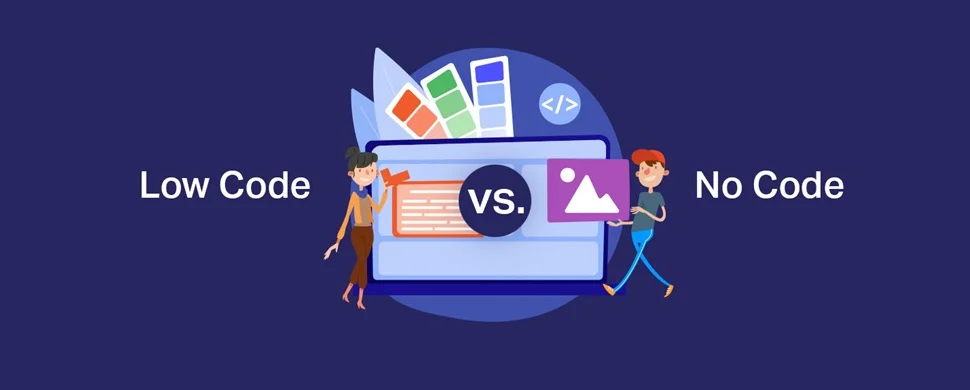
Muskan Taneja
5 min read
Introduction
Mobile app development has experienced remarkable growth over the past decade, transforming the way individuals interact with technology. As we approach the future, several significant trends are poised to shape the landscape of mobile app development, enhancing user experiences and revolutionizing various industries. According to Statista , it is estimated that the annual number of app downloads worldwide will amount to 299 billion in 2023, up from approximately 247 billion global app downloads in 2020. This remarkable growth highlights the increasing significance of mobile apps in our daily lives and the global economy.
In this article, we will let you delve into the predictions and trends expected to dominate mobile app development by the year 2030, providing insights into emerging technologies, development methodologies, user expectations, and the overall impact on the global economy.
So without any further ado, let’s get started.
What is Mobile App Development?
Mobile app development is the process of creating software applications that run on mobile devices. The process of mobile app development involves several stages, including planning, design, development, testing, and deployment. It can be developed for various platforms including iOS, Android, and Cross platforms.
Predictions and Trends To Watch Out For Mobile App Development
Run down through the following pointers to learn the latest predictions and trends which is the future of mobile app development.
-
Artificial intelligence
![Artificial intelligence]()
Artificial Intelligence is growing rapidly and gaining popularity in every industry. It is here to revolutionize mobile app development in various ways. Firstly, AI-powered personalization enables apps to customize user experiences based on their preferences and behavior. By analyzing user interactions and data, apps can deliver personalized content and recommendations, fostering stronger user engagement and satisfaction.
Secondly, AI-driven predictive analytics allows apps to anticipate user needs and preferences. By analyzing historical data, AI models can make accurate predictions, enabling businesses to offer proactive and tailored services. This enhances user satisfaction and encourages increased app usage.
Thirdly, Natural Language Processing (NLP) and voice assistants have made apps more user-friendly. With NLP technology, apps can understand and interpret human language, facilitating voice-based interactions. Voice assistants like Siri and Google Assistant respond to voice commands, providing instant information and performing tasks more naturally.
Additionally, AI is transforming app testing and quality assurance processes. AI-powered testing tools can automate repetitive tasks, identify bugs, and optimize testing, ensuring higher app reliability and faster releases. This leads to improved app quality and a better user experience.
Lastly, AI plays a crucial role in enhancing app security. AI algorithms continuously monitor app activities and user behavior, detecting anomalies and potential threats. Additionally, AI strengthens user authentication through biometric recognition, protecting sensitive data and ensuring app security.
-
5G Technology
![5G Technology]()
The rise of 5G technology is having a profound impact on mobile app development, bringing a host of advantages and opportunities. With its higher data transfer rates, lower latency, and improved network reliability, 5G enables faster and more responsive app experiences. Mobile apps can now handle more data-intensive tasks, leading to enhanced user interactions and smoother functionality.
Moreover, 5G significantly enhances app performance by reducing load times and enabling seamless real-time interactions. Users can enjoy high-quality multimedia content, such as 4K videos and augmented reality experiences, without buffering delays. This heightened performance provides a more engaging and immersive app experience.
-
AR & VR
![ar vr]()
AR/VR app development offers diverse opportunities across industries, revolutionizing user experiences, training, marketing, and more. In gaming and entertainment, immersive experiences enhance engagement, while e-commerce benefits from virtual product try-on. Education and training benefit from realistic simulations and marketing campaigns stand out with interactive AR/VR ads. Tourism and travel benefit from virtual tours, while architecture and real estate leverage 3D visualizations.
Additionally, healthcare utilizes AR/VR for therapy and training, and social networking explores interactive virtual spaces. Industrial applications gain from training simulations, and data visualization and analytics benefit from intuitive AR/VR representations. As technology evolves, businesses and developers have the chance to capitalize on AR/VR's immense potential and shape the future of various sectors.
-
Touchless UI
![Touchless UI]()
Touchless UI, also known as touchless user interface or touchless interaction, refers to a user interface design that enables users to interact with devices or applications without physically touching them. Instead of using touch-based gestures like tapping, swiping, or pinching, touchless UI relies on alternative methods for interaction, such as voice commands, gestures, eye tracking, or motion sensing.
The increasing demand for touchless UI has been driven by the need for more hygienic and contactless interactions, especially in public spaces and shared devices, due to the COVID-19 pandemic. Touchless UI technology has been integrated into various devices and applications, including smartphones, tablets, kiosks, elevators, payment systems, and more.
Voice assistants like Siri, Google Assistant, and Amazon Alexa are popular examples of touchless UI, enabling users to interact with their devices using voice commands. Similarly, motion sensors and gesture recognition technologies enable users to control devices by waving their hands or making specific gestures.
-
Blockchain Integration
![Blockchain Integration]()
Blockchain Integration in mobile apps refers to incorporating blockchain technology into the functionalities and architecture of mobile applications. It offers decentralized and transparent data storage, ensuring security and immutability. By leveraging smart contracts, mobile apps can automate processes without intermediaries, enhancing efficiency and trust.
Blockchain also enables real-time supply chain tracking, facilitates decentralized finance features, and supports tokenization and NFTs. While providing enhanced data ownership and privacy, blockchain integration faces challenges like scalability and user experience. Nevertheless, as technology advances, mobile apps can tap into its potential to transform industries and offer innovative solutions.
-
IoT Integration
![IoT Integration]()
The integration of the Internet of Things (IoT) into mobile apps refers to the seamless connection and interaction between mobile devices and a vast network of interconnected physical objects and sensors. By leveraging IoT technology, mobile apps can communicate with and control various smart devices and appliances, enabling users to monitor and manage their environments remotely.
This integration brings numerous benefits, such as improved automation, real-time data insights, and enhanced user experiences, as mobile apps become central hubs for managing smart homes, healthcare devices, industrial processes, and more. As IoT continues to expand, the integration of IoT functionalities in mobile apps will play a major role in transforming various industries and revolutionizing the way users interact with their surroundings.
-
Low code/ No code

The low code trend is another revolutionary approach to software development that has gained significant momentum in recent years. It involves using visual development tools and pre-built components to design and create applications with minimal manual coding. The goal is to streamline the app development process, making it more accessible and efficient for both professional developers and non-technical users.
Low-code platforms offer a wide range of benefits. For developers, it provides shortcuts and automation to accelerate the development process, allowing them to focus on higher-level tasks and complex functionalities. For businesses and organizations, it enables faster app development and deployment, reducing time-to-market for new products and services.

Conclusion
Looking ahead, the future of mobile app development will be shaped by emerging technologies, bringing exciting opportunities for developers. From on-demand services to gaming platforms, there's a lot to explore. With more people using smartphones and wearable devices, predictive analytics will be crucial for business success. As the mobile app industry evolves, companies must stay updated on the latest trends to create superior apps and enhance user experiences. So, keep an eye on the ever-changing landscape as new possibilities unfold in mobile app development, and contact Whiten App Solutions for all your web and mobile app development needs today.







